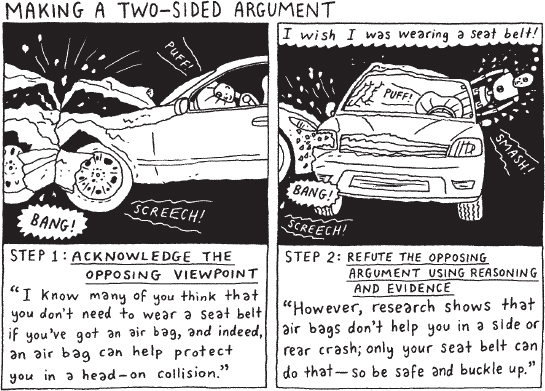Acknowledging Listeners’ Reservations
Printed Page 526
In analyzing your audience, you may discover reasons why your listeners are opposed to your thesis or at least uncommitted or neutral toward it. To address these reservations, consider using a two-sided argument. This does not mean that you simply present two different perspectives to the audience and leave it for them to decide. Rather, in a two-sided argument, you briefly note an argument against your thesis, and then use evidence and reasoning to refute that argument.

For example, suppose you are advocating that all students pass a comprehensive exam in their major subject before graduation. You anticipate that many classmates will find this option stressful, fearing that a low score would keep them from graduating. In a two-sided argument, you would first acknowledge that a comprehensive exam could be stressful, but then you might cite statistics showing that at a similar college, the majority of students pass such an exam. You could also show how study guides and review sessions successfully prepare students.
A well-presented two-sided argument can help you change audience members’ attitudes in favor of your thesis and strengthen your credibility.21 This is because people are more likely to support an idea if they know that its proponent is sensitive to their concerns and understands their views.
